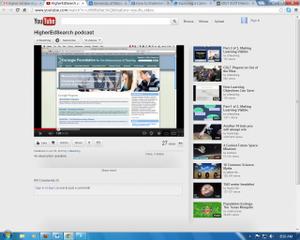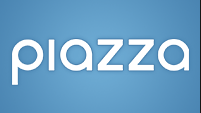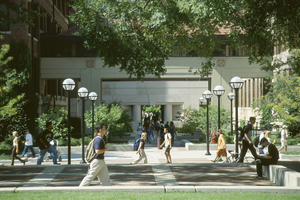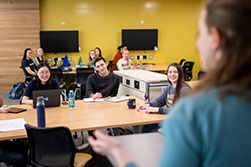| Exploring a Career in Higher Ed? Tools for Learning More about U.S. Institutions Thu, 09/26/2013 Are you currently searching for academic jobs or planning a higher ed job search in the future? Beyond exploring individual schools' websites, do you know how to find good information about the institutions you're applying to? Or how to find similar institutions in a given geographic area? Or how to research salary ranges for the kinds of positions you're seeking?
This screencast prepared by CRLT's Rachel Niemer highlights web-based resources that can answer a range of questions you might not have even known you had. The 7-minute presentation provides introductions to search tools from trusted sources like the Carnegie Foundation, the Chronicle of Higher Education, and the Department of Education to help you pursue a more fully-informed job search. For other resources for job seekers, click on the "PFF" (Preparing Future Faculty) tag below. Or click here for a range of resources from the recent one-day Preparing Future Faculty conference co-sponsored by Rackham and CRLT. Read more |
| Student Learning and Analytics at Michigan Thu, 09/19/2013  Friday, September 13, kicked off another year of the Student Learning and Analytics at Michigan (SLAM) speaker series with a presentation by Tim McKay, chair of the University's Learning Analytics Task Force and Thurnau Professor of Physics. McKay spoke about the accomplishments of the Task Force from the previous year, presented data from recent Learning Analytics research, and discussed plans for the next year. Friday, September 13, kicked off another year of the Student Learning and Analytics at Michigan (SLAM) speaker series with a presentation by Tim McKay, chair of the University's Learning Analytics Task Force and Thurnau Professor of Physics. McKay spoke about the accomplishments of the Task Force from the previous year, presented data from recent Learning Analytics research, and discussed plans for the next year. For those new to the topic, McKay explained that Learning Analytics (LA) -- or the collection, analysis, and use of large bodies of student data to improve learning -- can assist instructors in achieving a wide range of teaching goals. Data can be used to drive changes to how we interact with students, teach material, and evaluate learning, ultimately improving student outcomes in the classroom. The U-M Learning Analytics Task Force works to facilitate and support LA projects within the University community.
Last year, the Task Force funded a variety of LA projects at University of Michigan. One of these projects involved using data and technology to personalize the guidance given to undergraduate students in large lecture classes using the software system E2Coach. For more information on E2Coach and the Thurnau professors who created it, click here. Other projects involved creating systems to customize course advising, with the goal of improving success throughout students' university careers.
Videos of last year's series are already available here. If you would like to pursue a LA project related to your teaching, the Task Force will be sponsoring a Learning Analytics Fellows program during the Winter term. Applications for this program will be available soon and due by November 15. The last round of Exploring Learning Analytics grants also are due on November 15.
Read more |
| The Value of Midterm Feedback Wed, 09/18/2013 CRLT staff provide hundreds of Midterm Student Feedback sessions for U-M instructors every year. You can learn more about the process or request a consulation on this page. In this guest blog, LSA Associate Dean Phil Deloria discusses the value of these sessions even for very experienced teachers. If you're teaching this term, I encourage you to contact CRLT soon to schedule a Midterm Student Feedback session for your course. I want to emphasize that these consultations are:
It's not always easy to let someone else into your classroom, but the rewards are substantial. I have been teaching since 1994, and I think I do a pretty good job. But I have never failed to learn from a midterm evaluation. Indeed, many of our most distinguished teachers have already scheduled their feedback sessions for this fall. I urge you to do the same. Philip J. Deloria
Read more |
| Piazza in Your Classroom Tue, 09/17/2013 Answering the same student questions over and over... An inbox full of student emails... Too little peer-to-peer interaction in your classroom... If these challenges sound familiar to you, you may want to check out the online discussion platform, Piazza.
A recent CRLT study of University of Michigan students and faculty (from Winter 2013) found that Piazza is a great tool for answering student questions, reducing email volume, facilitating student interaction between classes, and increasing the number of students participating in class discussion.
Available through CTools, Piazza can help you promote student engagement outside the classroom while keeping the workload manageable. Instead of emailing you with questions after class, students can post questions to Piazza, and other students or GSIs can answer them. As the instructor, you can also answer questions, endorse select student answers, provide feedback, edit student responses, and view reports of student participation. One key strength of Piazza is the ease of organizing questions: you can create tags or folders for each lecture of assignment, so students can easily find out if the question they have has already been answered.
If you are a faculty member who is interested in learning more about Piazza or would like to try it out in your class, join the CRLT on September 23rd at 8:30am for Emerging Tech: Piazza, a workshop where you will get a hands-on guided tour of Piazza and learn about potential uses for it in your classroom. If you are a GSI and would like to learn more about Piazza, CRLT will be hosting Next Steps with IT on October 4th at 9am. This workshop will cover the use of multiple classroom tech tools including Piazza and UM Box.
Read more |
| Breaking the Ice with Your Students Tue, 08/27/2013 With the beginning of the semester just around the corner, many instructors are strategizing about how best to start productive classroom conversations. Students who speak even briefly at the beginning of a class meeting are more likely to participate in discussions going forward, and a well-chosen icebreaker can help everyone join in. As quick, low-stakes, and often fun activities that involve students at the beginning of a session, icebreakers can be a good way to learn about who's in the classroom, reduce anxiety, and engage all students in thinking together about course content.
For some ideas of potential icebreakers, see this list of icebreaker activities from Lansing Community College. CRLT also recently polled our Graduate Student Instructional Consultants (GSICs) to gather a list of their favorites. Here are some good ideas we received when we asked the GSICs to "tweet" us a particularly effective icebreaker they have used, seen, or heard about: Read more |
| Getting Your Courses Ready for Fall Thu, 08/15/2013
Whether you're starting a course from scratch or revamping something you've taught many times before, careful planning is key to successful teaching. CRLT offers many resources to support U-M instructors in their course planning as the beginning of the semester draws near.
Even small changes can produce big impacts on student engagement and learning. And whether it's enhancing a key assignment, tweaking a class activity, or introducing active learning into one lecture session, a well-planned shift can also fuel your own excitement about the new semester. Read more |
| First Day Resources Fri, 04/26/2013
CRLT provides many resources to help you quickly establish a productive learning environment in your courses. This page provides an overview of resources related to goals you might have for the first day, from building rapport among students to getting them engaged with the course material. You can also click on the links below for great ideas about:
As always, CRLT staff are available to consult with individual instructors about effective teaching strategies before, during, or after your course. Read more |
| Maximizing Student Response Rate on Course Evaluations Fri, 04/19/2013 End-of-term student course evaluations are important for a range of reasons, but they only provide useful information if a significant number of students contribute responses. How can you ensure a high rate of return from your students? Theresa Tinkle, Associate Chair of the U-M English department, recently gathered data from her colleagues that helps answer that question. She polled instructors in her department who regularly get a response rate of at least 80 percent on standardized student ratings to find out what their secrets might be. As it turns out, there's not much of a secret. The best practices she's compiled are relatively simple:
In short, if you let students know that you value their feedback and provide easy ways for them to complete course evaluations, they're very likely to respond. For additional ideas and information about student course evaluations, check out our resources on this page. Read more |
| Teaching in the Wake of a Tragedy Tue, 04/16/2013 Our thoughts and best wishes go out to everyone affected by the tragic events at the Boston Marathon. We are aware that particular teaching challenges can arise in the wake of such shared trauma, and our website includes resources that were developed by CRLT to support instructors facing such challenges. Follow this link to find a range of guidelines for discussing difficult topics with students. Especially relevant items include the guidelines for teaching in the aftermath of the September 11th tragedies. Key suggestions on that page for productively discussing such events include:
Other helpful resources in the wake of the Boston events include this article on student perceptions of more and less helpful faculty responses to public violence and tragedy. The authors, Therese A. Huston, and Michele DiPietro, discuss their findings that even a simple, brief recognition of the occurrence--and an acknowledgment that students may be experiencing distress--can make a big difference. Students appreciate their teachers' acknowledging public tragedies, even in courses where the material does not seem relevant to the events. As always, CRLT consultants are also available to consult with individual instructors about effective ways to respond to such events. In the face of such shocking violence, we at CRLT feel fortunate to witness the tremendous good accomplished by U-M teachers every day. Read more |
| Teaching Quantitative Reasoning: What's Working at U-M? Fri, 04/05/2013 In this post, guest blogger Joe Howard, a Ph.D. student in the School of Education’s higher education (CSHPE) program, discusses CRLT’s study of LSA’s Quantitative Reasoning (QR) requirement–-and the implications of that research for instructors at U-M.
Whether mathematically inclined or not, today’s college graduates will be expected to “navigate a sea of numbers on a daily basis” in their careers and daily lives (Grawe, 2012, p. 30). A majority of employers interviewed in a recent study noted that they want universities to enhance their quantitative reasoning (QR) skills, or students' ability to work with numbers and understand statistics (Hart Research Associates, 2009). These include: Read more |






 As winter term wraps up, many U-M teachers are thinking ahead to their spring and summer courses. When teaching in a short semester with a limited number of class sessions, it's especially important to make good use of the first day. How can you use an initial meeting to do more than review the syllabus and begin to learn students' names?
As winter term wraps up, many U-M teachers are thinking ahead to their spring and summer courses. When teaching in a short semester with a limited number of class sessions, it's especially important to make good use of the first day. How can you use an initial meeting to do more than review the syllabus and begin to learn students' names?




